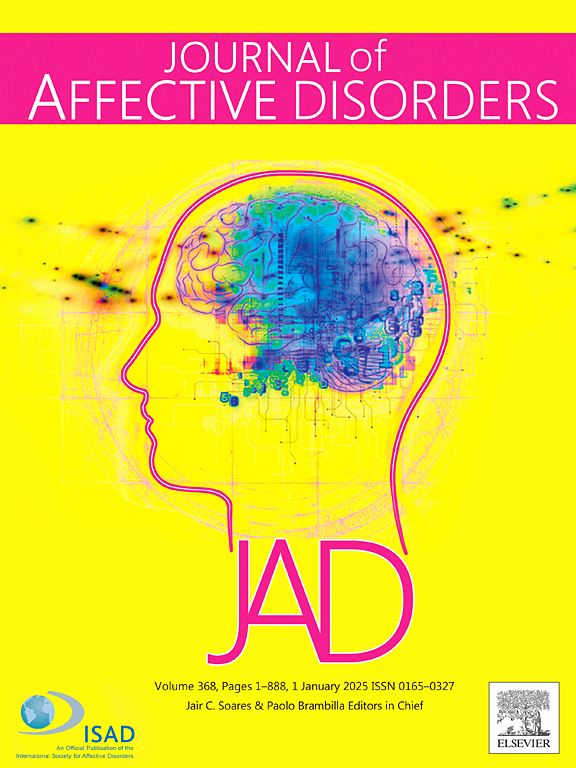Prevalence and network structure of depression, anxiety and adverse doctor-patient relationship risks among patients with physical diseases: A cross-sectional study
IF 4.9
2区 医学
Q1 CLINICAL NEUROLOGY
引用次数: 0
Abstract
Background
Mental health issues among patients with physical diseases are increasingly common. This study investigated the prevalence of depression, anxiety, and adverse doctor-patient relationship risks (ADRR) among patients with physical diseases, and the central and bridge symptoms of this network structure.
Methods
A total of 14,344 patients with physical diseases enrolled in this survey. The Patient Health Questionnaire-9 (PHQ-9), Generalized Anxiety Disorder-7 (GAD-7), and Psychological Safety Questionnaire were used to evaluate anxiety, depression, and ADRR. The “qgraph” package in R 4.4.3 was used to construct a network model to identify central and bridge symptoms.
Results
The prevalence rates of depression, anxiety, and ADRR were found to be 9.52 % (95 % confidence interval (CI): 9.04–10.00 %), 19.35 % (95 % CI: 18.71–20.00 %), and 4.29 % (95 % CI: 3.96–4.62 %), respectively. Within the network structure, the central symptoms identified were ‘Sad mood,’ ‘Restlessness,’ and ‘Excessive worry,’ which also served as the bridge symptoms. The flow network analysis revealed that ADRR exhibited the strongest associations with ‘Anhedonia’, ‘Restlessness’, and ‘Suicidal ideation’. Additionally, ‘Suicidal ideation’ shows strongest correlations with ‘Guilt’, ‘Concentration’, and ‘Restlessness’.
Limitation
The generalizability of the study's findings is constrained, as the sample consisted exclusively of inpatients, potentially limiting applicability to non-hospitalized individuals with physical illnesses.
Conclusion
This study provides novel insights into the comorbidity of depression, anxiety, and ADRR at the symptom level in patients with physical diseases through the application of network analysis. The identification of bridge symptoms highlights potential targets for interventions aimed at addressing the comorbidity among these disorders.
求助全文
约1分钟内获得全文
求助全文
来源期刊

Journal of affective disorders
医学-精神病学
CiteScore
10.90
自引率
6.10%
发文量
1319
审稿时长
9.3 weeks
期刊介绍:
The Journal of Affective Disorders publishes papers concerned with affective disorders in the widest sense: depression, mania, mood spectrum, emotions and personality, anxiety and stress. It is interdisciplinary and aims to bring together different approaches for a diverse readership. Top quality papers will be accepted dealing with any aspect of affective disorders, including neuroimaging, cognitive neurosciences, genetics, molecular biology, experimental and clinical neurosciences, pharmacology, neuroimmunoendocrinology, intervention and treatment trials.
 求助内容:
求助内容: 应助结果提醒方式:
应助结果提醒方式:


